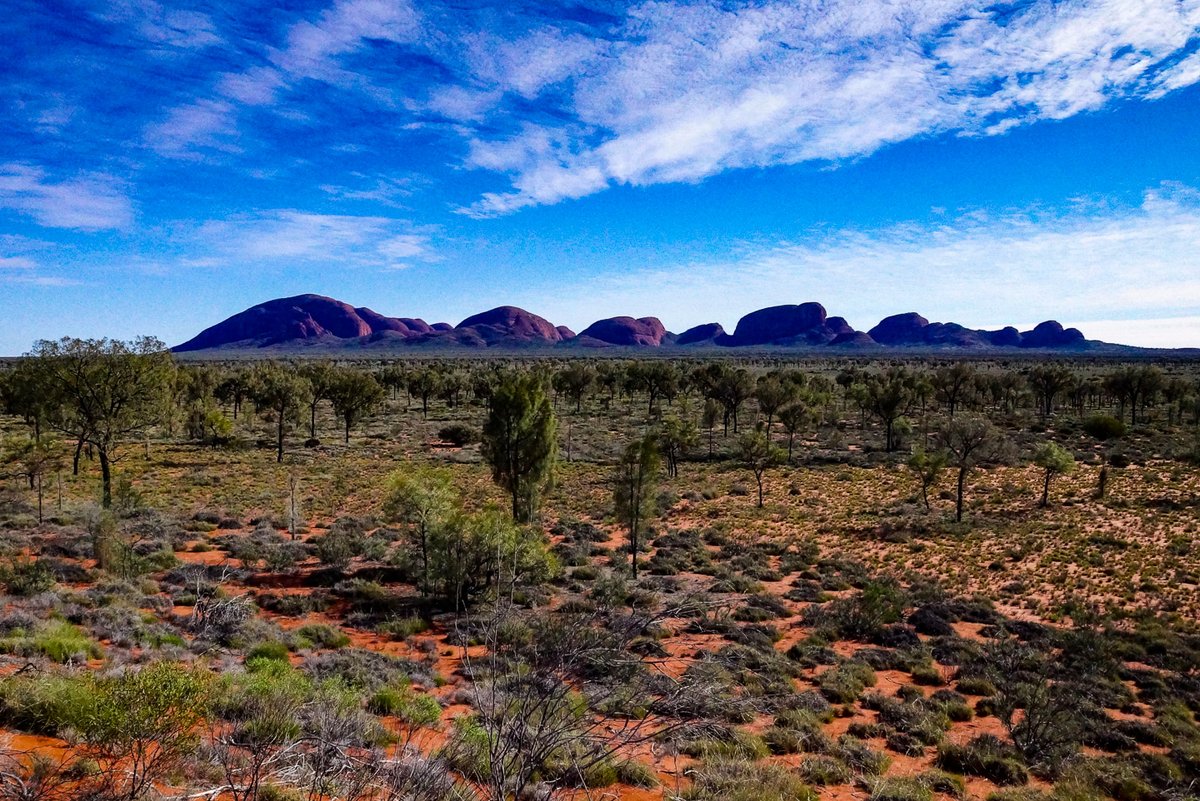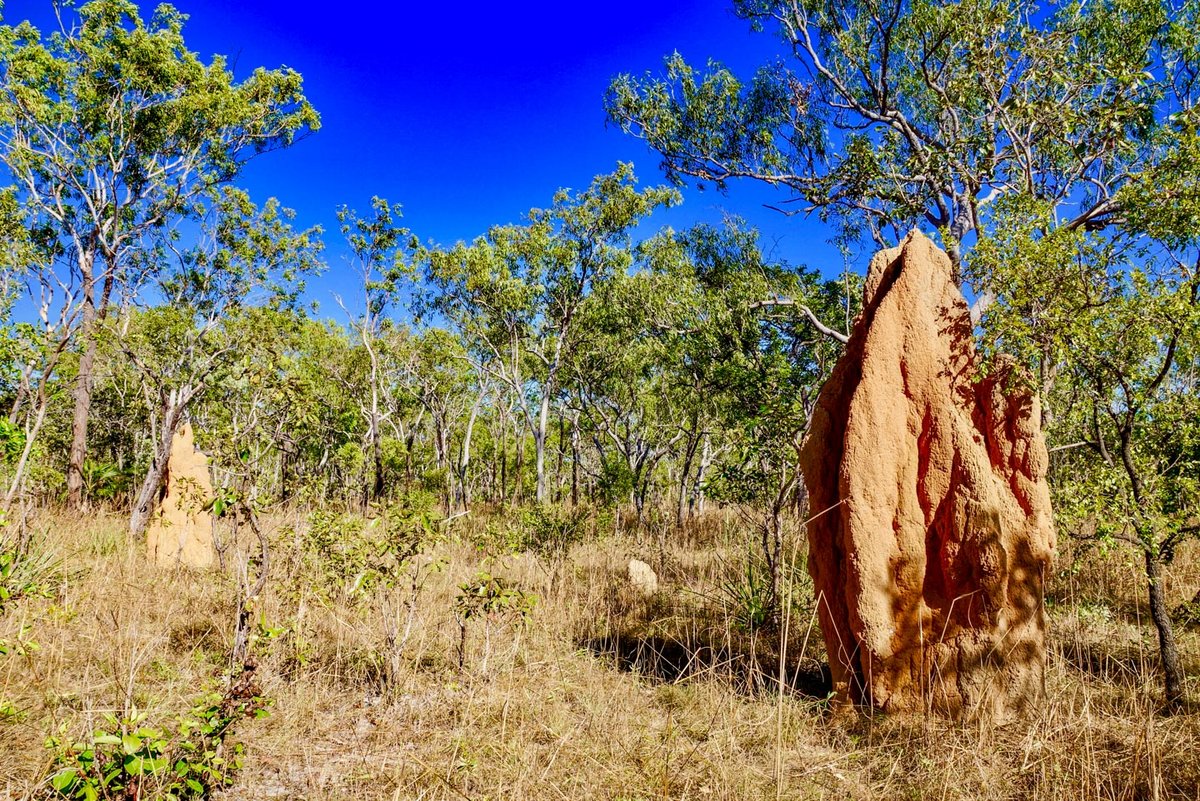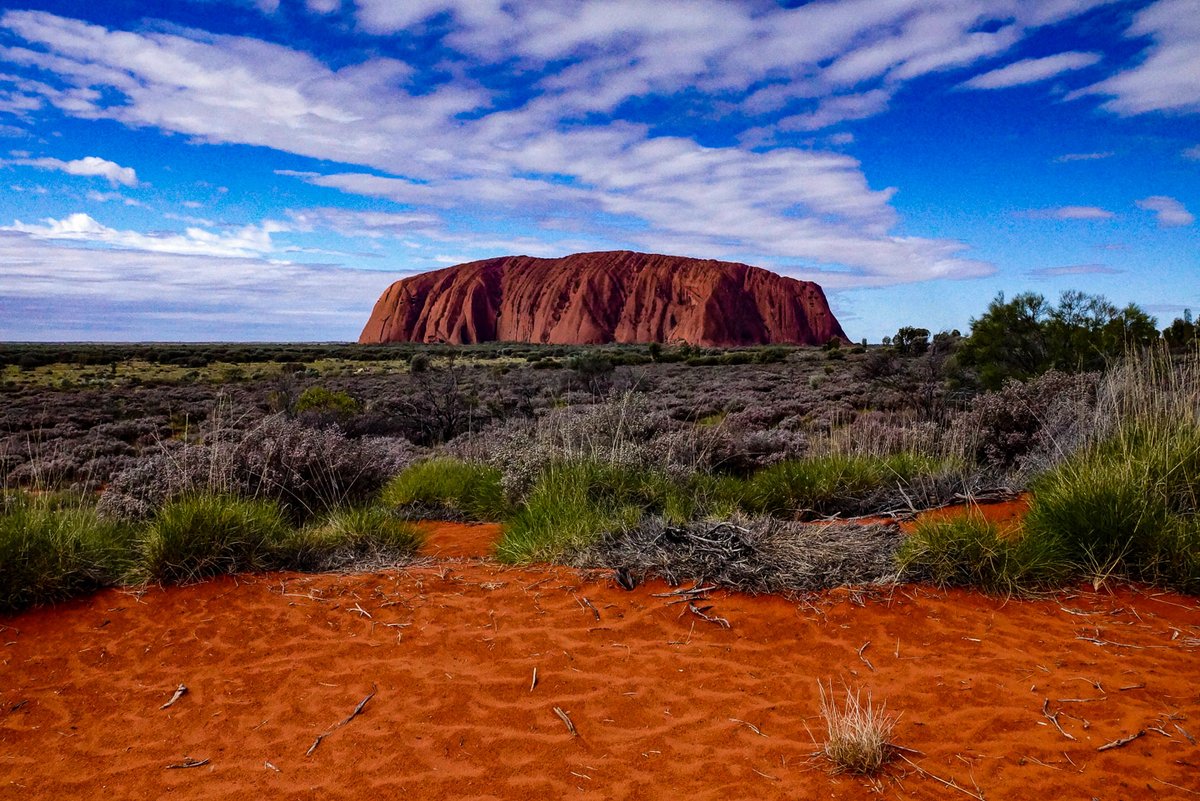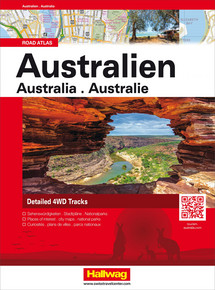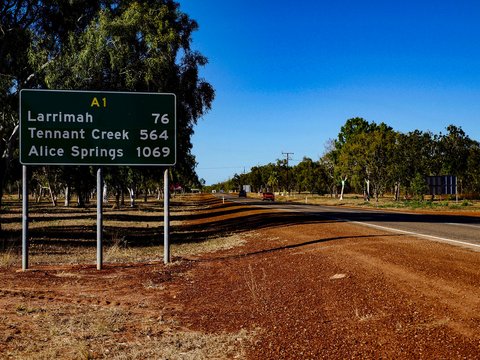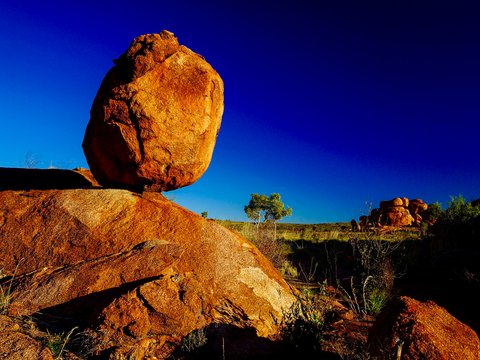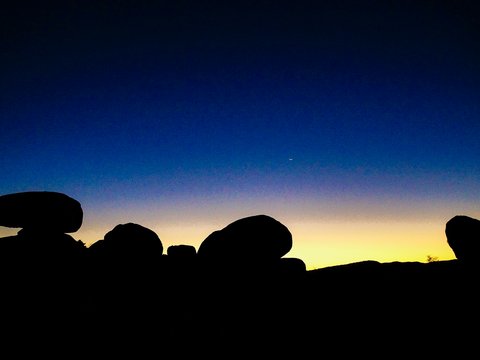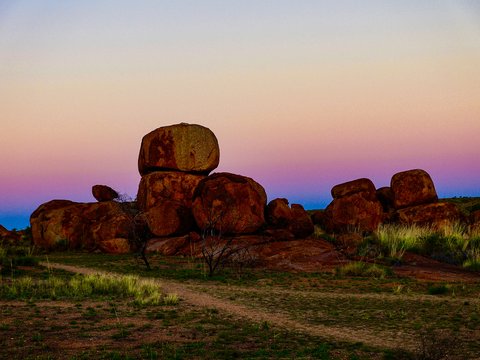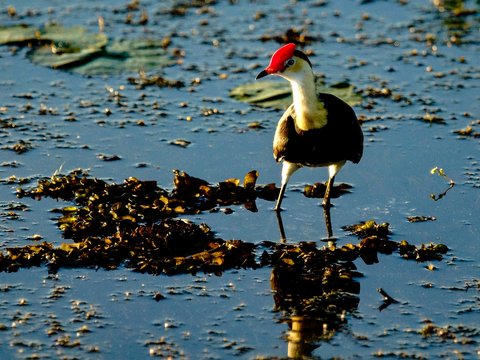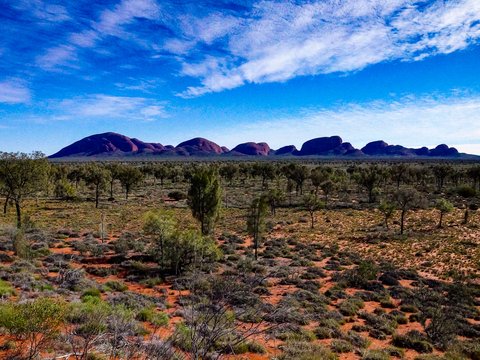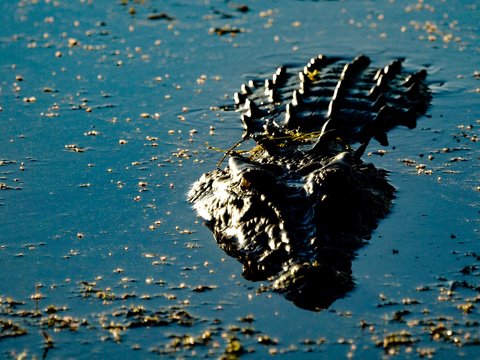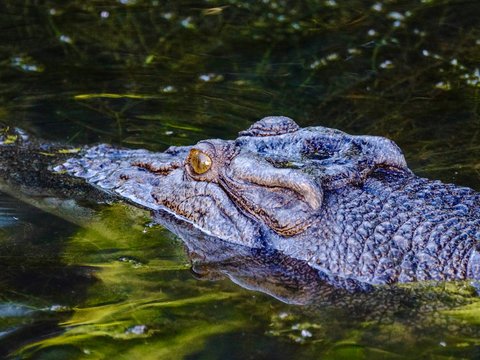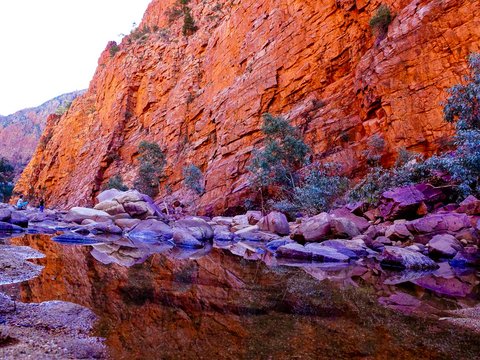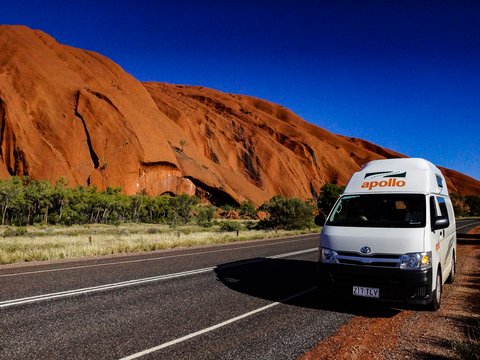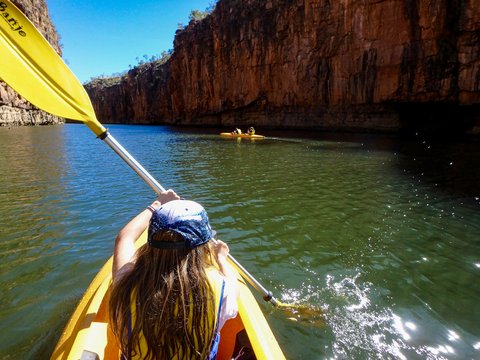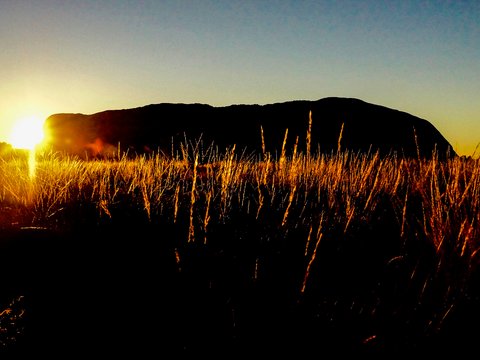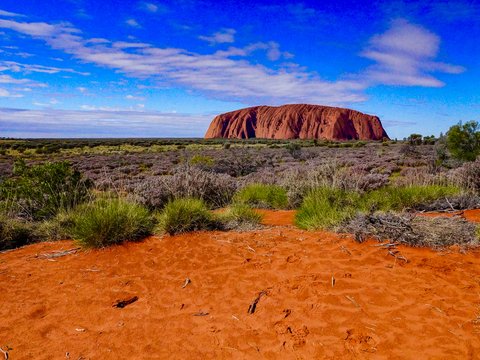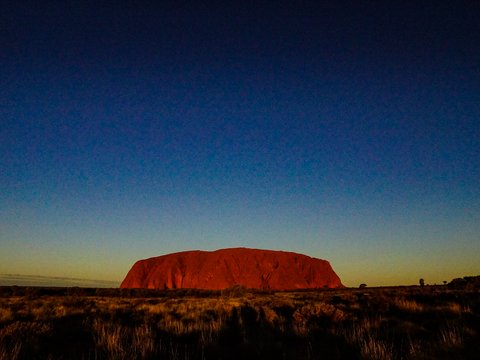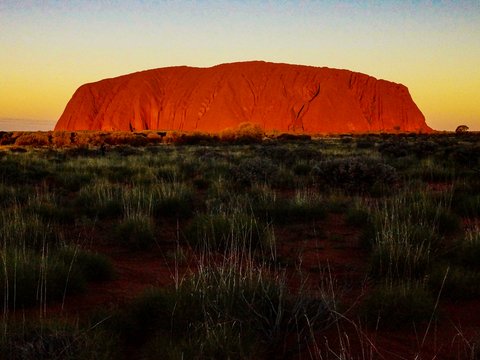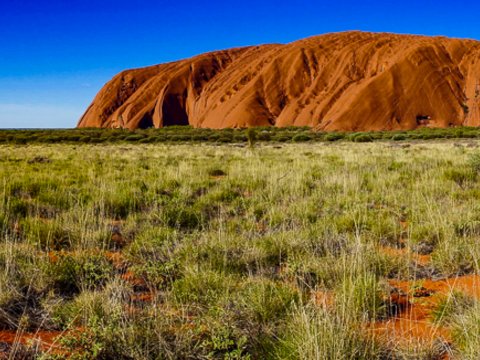The route is the goal - 2000km from Darwin to Uluru - the red shimmering monolith and landmark of Australia. On the way there, countless natural beauties await you: Starting from the Kakadu National Park with its crocodiles, over the rock formations of the Devils Marbles up to the mountain range of the MacDonnell Ranges.
Australia - that is much too far away. I always thought so, too. But the Northern Territory with the capital Darwin is only one stop and 16 hours flight time away. The federal state with 1.3 million square kilometres occupies a sixth of the area of the Australian continent and is home to only 250'000 inhabitants, of which a quarter are Aboriginal People. In the dry season from June to October it is warm and dry in the north of Australia with mild nights - only in the red centre around Alice Springs can it get fresh at night. You need a vehicle to explore the wide country.
The best thing is to take the house with you and so I rented a camper in Darwin - so you are independent and can let the warm evenings end with an open fire. South of Darwin you have to decide - either you visit the Litchfield National Park with its photogenic termite hills and great bathing possibilities in freshwater lakes or you drive directly into the Kakadu National Park, where you can observe saltwater crocodiles in their natural habitat. With a boat trip from "Yellow Water Cruises" you get unaccustomed close to the reptiles and discover a lot of birds - I am especially taken with the Jesus Bird, which is called by the locals because it looks like it can walk on the water. If you are interested in Aboriginal rock paintings, you will find a great abundance of these works of art in the National Park. Up to Alice Springs it is still over 1000 km on the Stuart Highway, but the road is well developed.
A worthwhile stop is the Nitmiluk National Park. The main attraction is the Katherine Gorge, a system of 13 gorges surrounded by high sandstone walls, which can be explored by canoe. The Devils Marbles are 400 km from Alice Springs and an ideal place to camp. The Devil's Marbles are a collection of huge granite spheres that rise spectacularly from the plain - a great way for photographers to photograph the rocks in the evening or early morning. Once in Alice Springs, you have to make a second decision. If you have time, the MacDonnell Ranges, a 644km red sandstone mountain range that runs west and east of Alice Springs, is well worth a detour. Those who like hiking will find excellent opportunities here and also have the chance to observe the rare rock kangaroos.
From Alice Springs it is another whole day's leg to the long-awaited destination: The Uluru (Ayers Rock) is probably the most photographed landmark of Australia and has a magical attraction: With a height of 348m and a circumference of almost 10 km, the huge rock still glows reddish when the sun has long disappeared under the horizon. In the national park, where one finds an excellent infrastructure in the "Ayers Rock Resort", a side trip to the Olgas (Kata Tjuta) is worthwhile - a mountain formation of 34 individual peaks - 40 km west of it.
On a hike through the Valley of the Winds you experience the impressive proportions of Kata Tjuta and discover the fascinating flora and fauna. Thus, 160 bird species live in the national park and with a little luck, one also gets to see a red giant kangaroo.

To properly prepare for your trip
How you get there:
With Swiss or Singapore Airline via Singapore
How you get around:
with camper from www.cu-camper.com
How long should I go:
14 days, better 3 weeks
Best travel time:
June to October
Highlights:
Kakadu National Park, Devils Marbles, Uluru
Delicious food:
grilled burgers or T-bone steaks on the campfire
More info:
www.northernterritory.com
Realised by Michael Bachmann
Further travel pictures under www.kissed-by-nature.com
